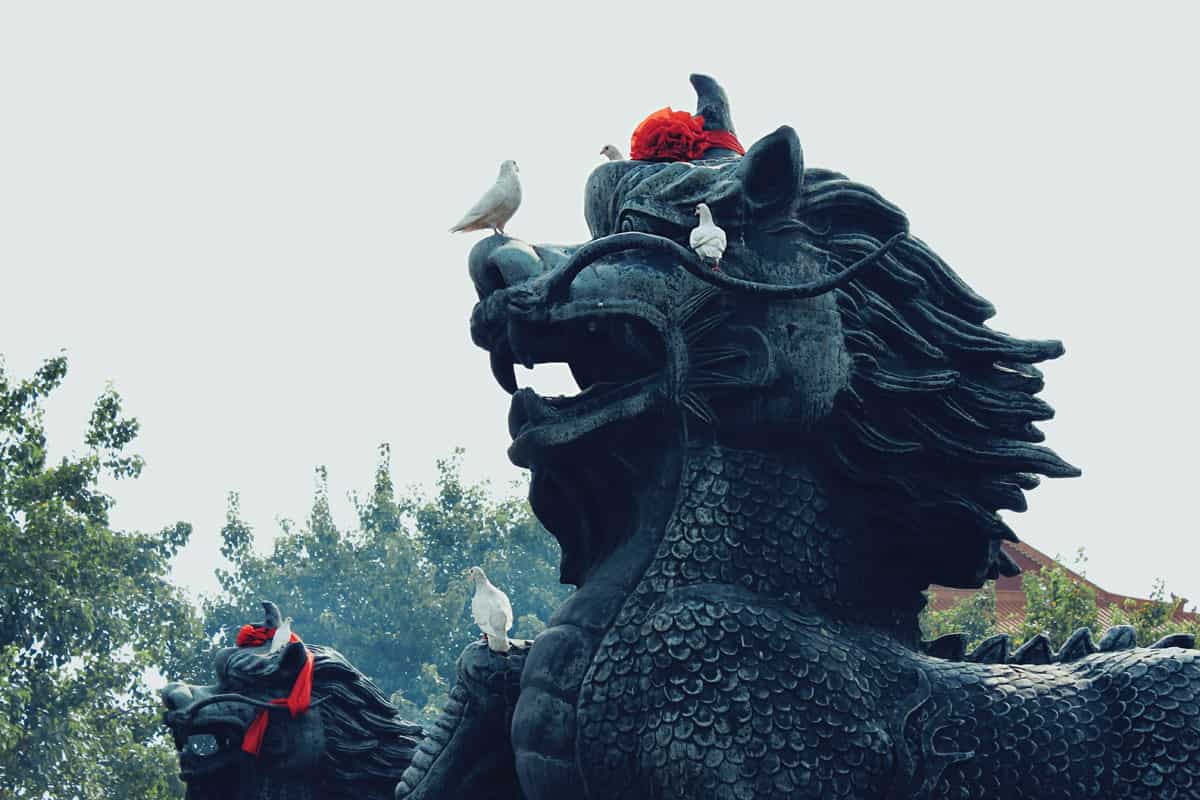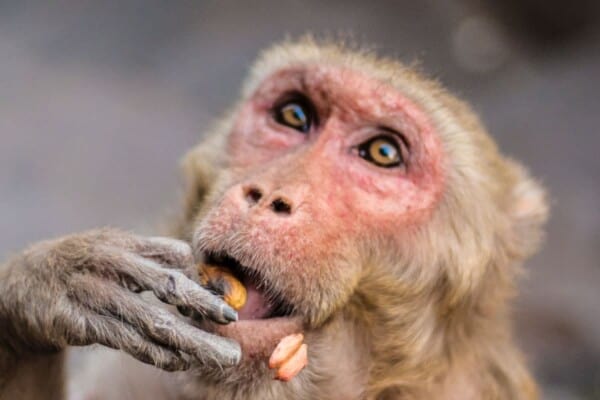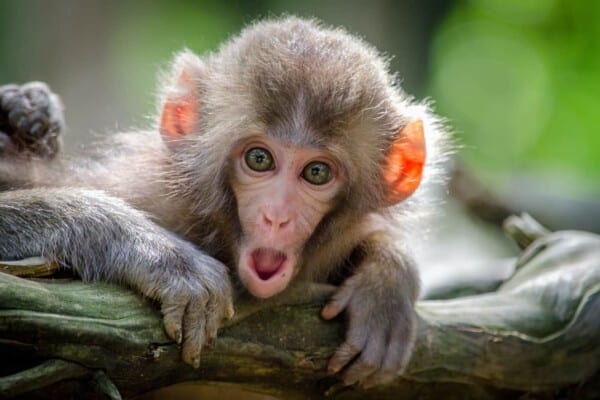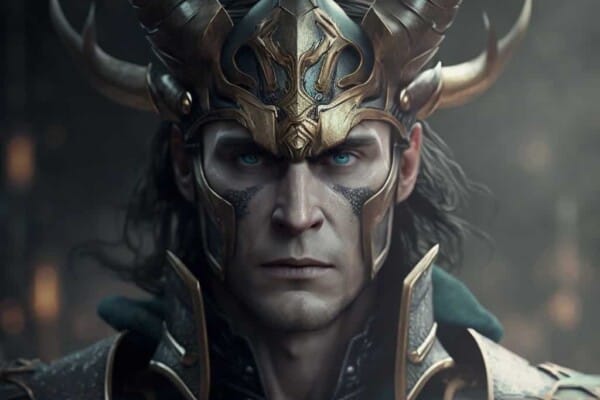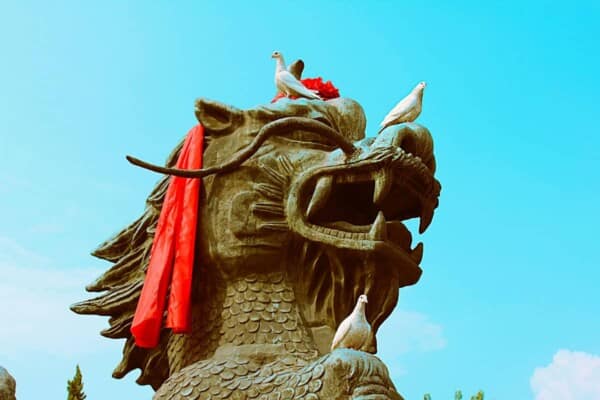One of the most enduring and fascinating creatures in Chinese mythology is the Dragon, but how many types are there?
This is one of those questions that very much depends on your own definitions of type. The Dragon exists across many cultures worldwide, each legend forming separately, but the Chinese dragons are some of the most persistent.
In Chinese myth, there are many different legends and kinds of dragons. Still, a very popular series of folklore describes the nine forms of dragons described below. There are several hundreds of specific kinds of dragons that show up in various myths, each symbolizing a different element or power.
What are the Nine Chinese Dragons?
The number nine is very important in Chinese folklore as it is the number associated with heaven. The number is also found in dragon tales. Perhaps unsurprisingly, then, there are nine categories of Dragon, which are frequently mentioned. These are:
- Celestial Dragon, Tianlong – These usually golden dragons carry the celestial palace upon their backs and serve as its protection.
- Spiritual Dragon, Shenlong – These are blue dragons that have power over wind, clouds, and rain.
- Hidden Treasure Dragon, Fucanglong – These are gold or opalescent and live underground, protecting gems and precious minerals.
- Underworlds Dragon, Dilong – These earthly dragons are the female equivalents of the Shenlong and have jurisdiction over rivers and streams. They can mate with Shenlong.
- Winged Dragon, Yinglong – This Dragon also has dominion over the rain. Legend states it was once a faithful servant of the Yellow Emperor.
- Primitive Dragon, Jiaolong – This is the kind of water-dragon born in and rules the seas, and it was the first kind of Dragon in Chinese mythology.
- Coiled Dragon, Panlong – Similar to the Jiaolong in many ways, the Panlong also has control over time.
- Yellow Dragon, Huanglong – The Yellow Emperor reincarnated as this Dragon, associated with the earth just as he was in life. It taught the goddess of seasons how to write.
- Dragon King, Long Wang – The ruler of the dragons. He rules over the four dragon gods of the seasons and cardinal directions:
- Azure/Blue Green/Green Dragon, Ao Guang – Dragon God of the East and Spring
- Red Dragon, Ao Qin – Dragon of the South and Summer
- Black Dragon, Ao Ming/Ao Shun – Dragon of the North and Winter
- White Dragon, Ao Run/Ao Ji/Ao Jun – Dragon of the West and Autumn
The Dragon King also had nine sons, each a form of hybrid Dragon that inspires many different aspects of Chinese architecture and design.
Are Chinese Dragons Evil?
Chinese Dragons are not generally considered evil. Chinese mythology focuses heavily on balance, and the dragons play a heavy role in this. They are often benevolent creatures who aid humans or even who once were human. The dragons have control over the elements and are akin to gods.
That is not to say that they cannot be dangerous or destructive, or even the villain of particular stories. The Buddhists, bringing tales related to India’s naga, often tell tales of violent, vicious creatures. One of these is the White Dragon, born to a human mother who died of grief at birthing a monster. In his own misery, the Dragon destroyed the surrounding land in a hurricane and vanished. After the people buried his mother, he began to visit her tomb. Now, he creates yearly thunderstorms in her memory.
What Does the Chinese Dragon Symbolise?
There are layers of symbolism to any Chinese mythological creature, and perhaps none more than the Dragon. They are symbols of the raging elements of sky, sea, and fire; they are symbols of divinity and godhood and human strength; they are symbols of the primordial and unknown and of change.
Worshipping the dragons is said to bring luck, and using their paintings and symbols can protect against harm. For example, a water dragon above a door prevents fire. Despite all of this, there are also many stories of great hunters like Nezha who overcome, outsmart, or even slay dragons.
What Roles do Dragons Play in Chinese Mythology?
The first dragons in Chinese mythology were water dragons, and their rule was over the sea. They brought rains and carried immortals on their backs. The older dragons were tame, but their descendants, the winged dragons, lived in the mountains and brought terror.
In all mythology, dragons were sacred, and many great emperors were associated with the creatures. The highest compliment one could give for a soldier or scholar was to compare them to a dragon’s characteristics.
The Dragon is associated with newness, both in the sunrise and in the bringing of rains to nourish crops and carry water to the people. They were also said to rule the seasons and one of the cardinal directions per dragon god.
Four-clawed dragons were lucky. Five-clawed dragons, however, were godly, reserved only for the Emperor. It was actually a crime for anyone except the Emperor to embroider their clothing with five-clawed dragons.
Dragons could change size at will, shrinking as small as the invaluable silkworms or taking up the entire sky, and they could also turn invisible. These powers made them an invaluable asset in tales of war and conquest.
As bearers of divine light rather than standard fire, dragons served as the conduit between heaven and earth. Once per year, they would report to the gods what they had found in the world below. The spirit-fire was what gave the dragons their powers.
The sun and moon were also often described as the dominion of dragons. There were many depictions of them as orbs, each with a protective dragon curled around it for protection and strength.
Dragon bones were said to contain magical properties, especially for the purpose of healing. The ancient Chinese believed that dragons shed their bones yearly, much like a snake sheds its skin. Depending on the color of the Dragon, the medicinal use would vary:
- Blue – bone and liver illnesses
- White – lung and small intestine disease
- Red – heart and large intestine issues
- Yellow – problems with the stomach and spleen
- Black – issues with kidneys and bladder
Nowadays, it can be assumed that these bones were actually dinosaur fossil bones, as the region is rich in them.
Final Thoughts
There are few creatures more captivating than the Dragon. It is one of the things most associated with China – bright, colorful, snake-like creatures that twist across the sky. The common image of a red dragon is because red is the color of good luck and happiness – and dragons, of course, bring boons to their worshippers. This is why the Dragon is often used as part of the parade during the Chinese New Year.
In the Chinese Zodiac, only the Dragon is a creature which today is not considered to exist, proving how ingrained they were in the day to day thoughts of the average Ancient Chinese scholar. Astrologically, Dragons are considered wise, intense, commanding, and the best kind of leader – in short, they have attributed the same qualities which make up the character of their powerful mythological counterparts.
So why do Chinese dragons provide such interest in people the world over? Perhaps it is their near-unique status as truly liminal beings. They are primordial creatures of the earth who commune with gods, giving us a glimpse of the kind of power truly possible for earth-born creatures who have achieved enlightenment.

